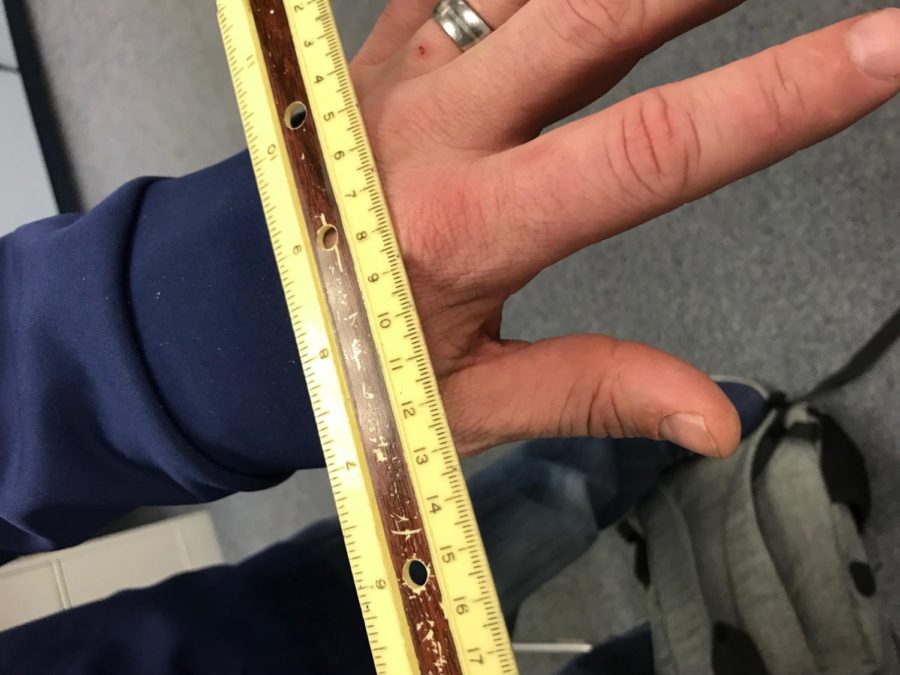With petition ready to sign, Kling aims to ban corporal punishment
Nineteen states still have not banned corporal punishment.
There are many different types of punishments students can receive inside a school building. People are well aware that a student could possibly receive detentions, suspensions or expulsions for any type of behavior that violates the school’s rules. However, what most people are not aware of is that in 19 states corporal punishment is still legal.
Corporal punishment is when a school official uses physical force to cause pain to a child in order to punish them for misbehaving. The most commonly known forms of corporal punishment are spanking and paddling children.
DGS junior Demetri Kling feels very passionately about fighting against corporal punishment and wants to take action. Kling wishes to ban corporal punishment in the U.S. and has taken action with a petition with the intent of banning the spanking and paddling of kids.
“[My] goal is to ban corporal punishment in the U.S. public school by [advocating for a] federal law [to ban it] because it’s still legal in nineteen states,” Kling said.
Kling came across corporal punishment when searching through the internet. He is interested in Social Justice issues and was inclined to learn more about the cause.
Kling brought his findings to DGS social studies teacher, Greg Maloney, who was also surprised and unaware that such activity was still an issue in the U.S.
“He didn’t know that it was legal and he says it’s not good to have that obviously in schools,” Kling said.
Kling reveals statistics on the number of children subjected to corporal punishment according to the Department of Education’s Office of Civil Rights.
“For example, more than one hundred thousand children in U.S. public schools were subjected to corporal punishment and during the 2013 14 school year,” Kling said.
Kling wishes to be an activist for all children who are subjected to corporal punishment and hopes that the U.S. will help him take action against corporal punishment. Although he is still working on a plan to tackle his activism, he believes that large protests would be an appropriate way to protest.
“ It’s very early to say [how he would like to go about fighting against corporal punishment], but I [feel] like large scale protests would be a good idea to [fight against corporal punishment],” Kling said.
Some numbers that have appeared in the past few years are that a total of 163,333 students were subjected to corporal punishment in public schools during the 2011-2012 school year. Additionally, the National Institutes of Health and U.S. Department of Education stated that the number of students that have been subjected to corporal punishment has consistently been the same in the past few years, with no decline in sight.
Another statistic is that the number of students that end up seeking medical attention as a result of corporal punishment are between 10,000 to 20,000 students according to the Society for Adolescent Medicine. Treatment for students for bruises, hematomas, broken bones, and nerve and muscle damage have all been a result of corporal punishment.
In order to bring eyes on to the topic, Kling introduced a petition that would ban corporal punishment at the federal level. However, the petition must have 100,000 signatures within 30 days for it to reach the White House. The petition will be attached to the bottom of the article if readers would like to ban the paddling and hitting of children in public schools.
“It’s great to share this information so we can come together to use our voices to inspire social change,” Kling said.
If you want to look at the petition, (click here).




Jake Lloyd • Feb 9, 2019 at 10:26 am
I don’t feel this is right I support the ban
meghan deenihan • Feb 8, 2019 at 8:24 pm
I agree with this article and feel that this should banned across the US!